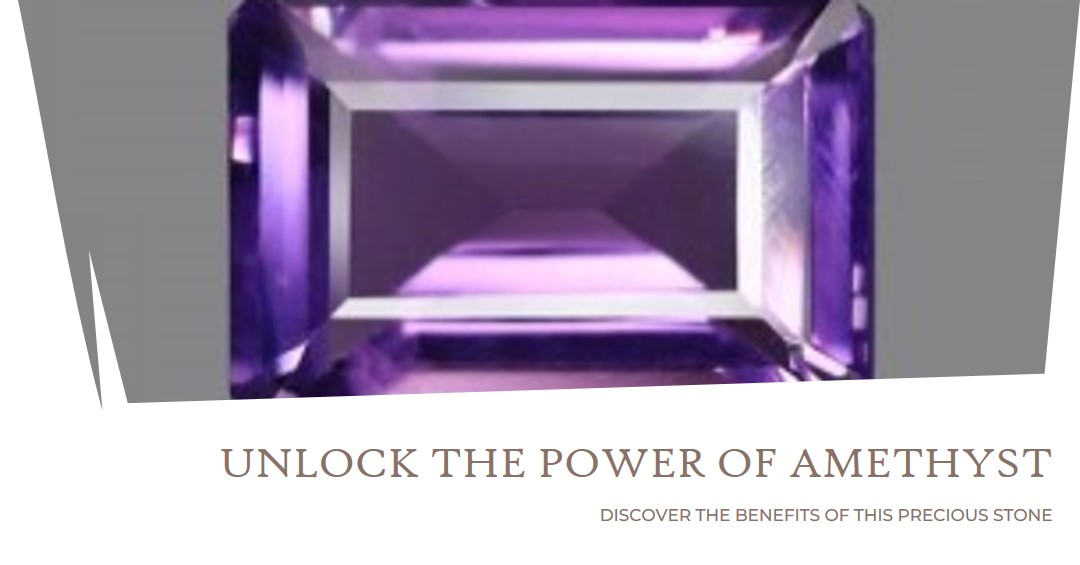Fashion
The Amethyst Stone: A Comprehensive Guide
Amethyst is a variety of quartz that is renowned for its striking violet to purple coloration. Its name derives from the Greek word "amethystos," meaning "not intoxicated," reflecting the ancient belief that the stone could protect its wearer from drunkenness.
Historical Significance
History, amethyst has been prized by various cultures for its beauty and throughout purported protective qualities. It was a favorite among Egyptian pharaohs and used in the crowns of European royalty.
Origins and Formation
Geological Formation
Amethyst forms within geodes or volcanic rocks through a process of slow crystallization from silica-rich solutions. This process results in its distinct crystal structure and vibrant color.
Major Sources and Locations
The primary sources of high-quality amethyst stone are Brazil and Uruguay, but significant deposits are also found in Zambia, South Korea, Russia, and the United States.
Physical Properties of Amethyst
Color Variations
Amethyst exhibits a range of colors from light lavender to deep purple. The variation in color is due to the presence of iron and other trace elements.
Crystal Structure
Amethyst crystals belong to the trigonal crystal system and typically form as prismatic crystals, often ending in a pyramid-like shape.
Types of Amethyst
Natural Amethyst
This type of amethyst is mined directly from the earth and remains in its natural state without any alterations.
Synthetic Amethyst
Synthetic amethyst is produced in laboratories and is chemically identical to natural amethyst. However, it lacks the natural inclusions found in mined stones.
Heat-Treated Amethyst
Some amethyst is heat-treated to enhance or change its color, often transforming lighter stones into deeper purples.
Metaphysical Properties
Healing Properties
Amethyst is believed to have numerous healing properties, including aiding in stress relief, promoting relaxation, and enhancing spiritual growth.
Chakra Alignment
In the practice of crystal healing, amethyst is associated with the crown chakra, which is linked to enlightenment and higher consciousness.
Emotional and Spiritual Benefits
Amethyst is often used to balance emotional highs and lows, providing calmness, clarity, and a sense of stability.
Amethyst in History and Culture
Ancient Civilizations
Amethyst was highly valued in ancient Egypt, Greece, and Rome, often used in jewelry and amulets to ward off negative energies and intoxication.
Mythology and Legends
According to Greek mythology, amethyst was created from the tears of the god Dionysus, who wept over a young maiden named Amethystos. His tears stained a clear crystal purple, creating the first amethyst.
Religious Significance
Amethyst has been used in religious contexts, including in the Christian church where it symbolizes piety and is often found in bishops' rings.
Uses of Amethyst
Jewelry and Ornamentation
Amethyst is widely used in various types of jewelry, including rings, necklaces, bracelets, and earrings, prized for its rich color and durability.
Feng Shui and Home Decor
In Feng Shui, amethyst is used to bring a sense of tranquility and protection to a space. It is often placed in living rooms, bedrooms, and meditation areas.
Industrial Uses
Beyond its aesthetic and metaphysical uses, amethyst is also utilized in industry, particularly in the production of semiprecious gemstones and abrasives.
Amethyst in Modern Healing
Crystal Healing Practices
Amethyst is a cornerstone in modern crystal healing practices. Practitioners use it to help alleviate physical, emotional, and spiritual ailments.
Meditation and Mindfulness
The stone is commonly used during meditation for its ability to enhance clarity and spiritual awareness, promoting a deeper state of mindfulness.
Integrative Medicine
In integrative medicine, amethyst is sometimes used alongside conventional treatments to support overall well-being, although scientific evidence supporting these uses is limited.
Collecting and Caring for Amethyst
Tips for Collectors
When collecting amethyst, look for stones with deep, consistent color and minimal inclusions. Authenticity certificates from reputable dealers can ensure the quality and origin of the stone.
Cleaning and Maintenance
Amethyst should be cleaned with mild soap and water. Avoid harsh chemicals and prolonged exposure to direct sunlight, which can fade the stone's color.
Detecting Fake Amethyst
To detect fake amethyst, consider its color, clarity, and weight. Natural amethyst often has slight color zoning and inclusions, while synthetic stones are typically flawless.
Amethyst in Art and Design
Artistic Inspirations
Amethyst has inspired artists for centuries, featured in various artistic expressions from intricate jewelry to elaborate sculptures.
Famous Artworks
Notable artworks featuring amethyst include Fabergé eggs and royal crown jewels, which highlight the stone's regal and luxurious appeal.
Contemporary Designs
Modern designers continue to utilize amethyst in innovative ways, creating pieces that blend traditional craftsmanship with contemporary aesthetics.
Learn More: Natural Amethyst stone Benefits
FAQs about Amethyst
Common Questions and Answers
What is the origin of the name "amethyst"?
The name "amethyst" comes from the Greek word "amethystos," meaning "not intoxicated," reflecting the ancient belief that the stone could prevent drunkenness.
What are the healing properties of amethyst?
Amethyst is believed to help with stress relief, emotional balance, and spiritual growth. It is also used in crystal healing practices to enhance clarity and calmness.
How can you tell if amethyst is real?
Real amethyst typically has slight color zoning, natural inclusions, and is cool to the touch. Lab-grown amethyst will be flawless and may lack these natural characteristics.
Where is the best amethyst found?
The best-quality amethyst is often sourced from Brazil and Uruguay, known for its deep, vibrant purple stones.
Can amethyst fade in sunlight?
Yes, prolonged exposure to direct sunlight can cause amethyst to fade. It is best to store it away from direct light to maintain its color.
Is amethyst used in any industrial applications?
Yes, amethyst is used in the production of semiprecious gemstones and abrasives, among other industrial applications.
Conclusion
Amethyst is a gemstone of profound beauty and significance. Whether appreciated for its aesthetic appeal, metaphysical properties, or historical importance, it continues to captivate and inspire. From ancient civilizations to modern collectors, amethyst remains a cherished and valuable stone.
Tags



